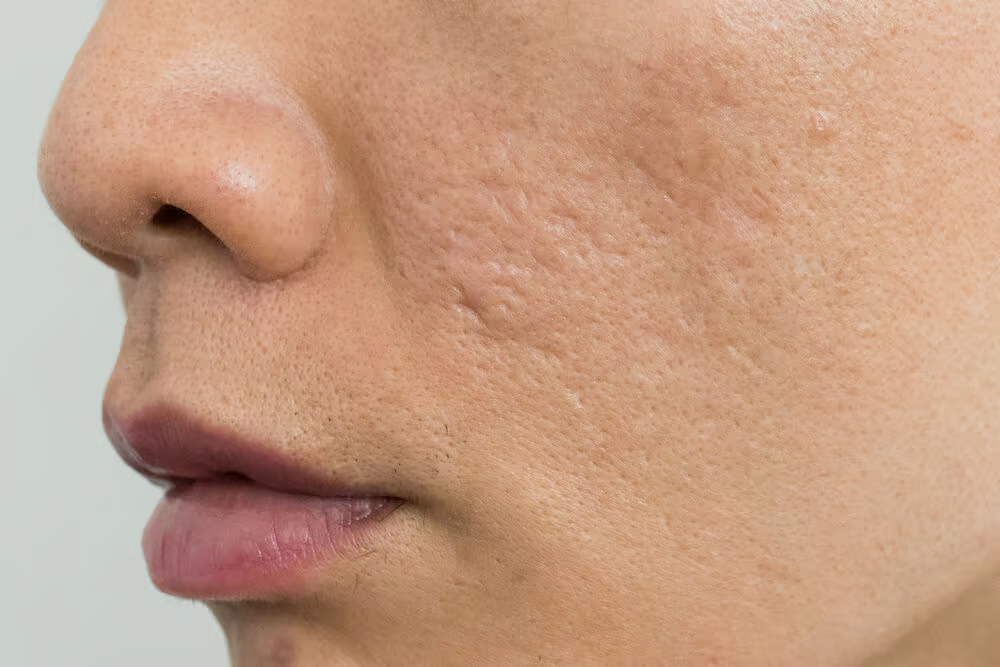Acne scar treatment in Singapore as shared by someone with no commercial affiliations. During my research, I was fortunate enough to consult dermatologists with extensive experience in this field.
Why am I creating this resource? Primarily because I’m that stereotypical long-term acne sufferer myself.
For a more detailed explanation of acne removal treatments in Singapore, check out the Guide To Best Acne Scar Treatments In Singapore.
The answers provided below are based solely on acne scar removal treatments I’ve personally experienced and know to be most effective from my medical perspective.
Below you’ll find a comprehensive FAQ, assembled from the most frequent questions I’ve encountered regarding acne scar treatments in Singapore:
1. Can I treat active acne and some acne scarring at the same time?
No, addressing your active acne should be your priority. Many acne scar removal procedures can actually exacerbate existing acne.
Read more: The Ultimate Guide to Acne Removal in Singapore
Furthermore, prevention is certainly more effective than treatment, so I would recommend focusing more on preventing new acne scars from developing if you’re currently dealing with active breakouts.
2. Okay. My acne is gone. Hallelujah. Now how do I get rid of my acne scars?
Congratulations! First, it’s essential to identify the specific type of scarring you have. They generally fall into two main categories:
The first category is post-inflammatory hyperpigmentation (PIH), which appears as reddish or discolored patches where pimples previously existed. A retinoic acid product such as Differin cream is effective for this condition. It’s worth noting that PIH also gradually resolves on its own over time.
The second category includes superficial or deeper structural scars, which can be further classified into four types: ice pick, boxcar, rolling, and keloid scars. (I recommend searching these terms on Google Images for visual references).
Keloid scars result from excessive skin growth during the healing process. For larger keloid formations, steroid injections are typically recommended, while Pulse Dyed Light therapy is more suitable for milder, reddish elevations.
The latter typically responds more favorably to acne scar removal treatments.
3. I have a mix of the other three scars – ice pick, box car and rolling scars. Which acne scar treatment works?
You’re in luck—Fractional CO2 laser therapy is particularly effective for treating these three types of scars. This isn’t just hearsay—research has shown.
Interestingly, this treatment is also popular among celebrities and older individuals looking to reduce wrinkles and repair sun-damaged skin.
Read more: 5 Easy Ways to Get Rid of Hormonal Acne Scars
One important caveat: all acne scar treatments carry some risk of causing PIH themselves, especially if you’re inconsistent with sunblock application following treatment.
4. What are the benefits of fractional laser over chemical peels with acne scar treatment?
Chemical peels function through a chemical reaction with your skin, where the duration of exposure is critically important (excessive exposure can result in skin burns).
Fractional laser technology allows the practitioner to target your acne scars with precise laser energy levels—providing greater accuracy and control throughout the procedure.
While a deep chemical peel can potentially achieve results comparable to laser treatment, it typically involves significantly higher risks.
5. How does Fractional CO2 work? I need some evidence that it’s effective for acne scar removal.
The treatment works by directing concentrated laser beams into the deeper layers of your skin.
Your skin then repairs these microscopic channels by pushing out the damaged skin tissue and replacing it with new, healthier skin.
Numerous clinical studies have consistently recognized this procedure as the gold standard for acne scar treatment.
6. Okay I’m sold on the fractional laser. How do I choose between all the different skin clinics available?
The primary differences between clinics lie in their fractional laser settings and the doctor’s expertise in assessing different skin types and acne scar variations.
The doctor should also be thoroughly familiar with managing potential side effects and complications that may arise from treatment.
Regarding clinic selection, I’d suggest following a trusted personal recommendation. It’s also advisable to verify the doctor’s qualifications and relevant experience.
Some important questions to ask your prospective doctor include: What specific results can be realistically achieved, and how many treatment sessions would that require?
7. How do I know if the clinic is using a laser with energy settings that are too low to achieve results?
A laser operating at insufficient energy levels won’t penetrate deeply enough to be effective. Be wary if a clinic suggests unusually frequent laser sessions.
From my personal and professional perspective, I would recommend fractional laser treatments no more than once every 2-3 months—your skin requires adequate time to heal and generate new tissue.
Higher laser energy settings generally yield more significant results, but also entail longer recovery periods and increased risk of side effects.
8. How much improvement can I expect, and when can I see results?
Typical improvement ranges from 40-60%, before eventually plateauing.
Results also depend significantly on the severity of your acne scarring—if it’s relatively mild and you can manage a 7-day recovery period, you might only need 1 or 2 treatment sessions.
While some immediate improvement is noticeable, the complete results won’t be visible until 3-6 months after treatment, as your skin needs sufficient time to regenerate and produce new collagen.
9. What is fractional laser like?
Regarding discomfort, fractional laser treatment feels similar to rubber bands snapping against your skin. For comparison, popping a pimple is typically more painful.
Several hours after the procedure, your skin will appear noticeably red and feel tight, similar to a severe sunburn (hence the recovery period).
Peeling may also occur after a couple of days.
Be prepared to limit sun exposure and apply sunblock generously! Your doctor will provide a regimen of skin repair creams, moisturizers, and sunblock for post-treatment care.
In conclusion, this represents my initial article on acne scar treatment options, and I hope it provides you with a solid foundation for considering your treatment journey.
As mentioned earlier, while numerous acne scar removal treatments exist in the market, I’ve focused exclusively on approaches I would personally use and recommend to my own friends and family members.

